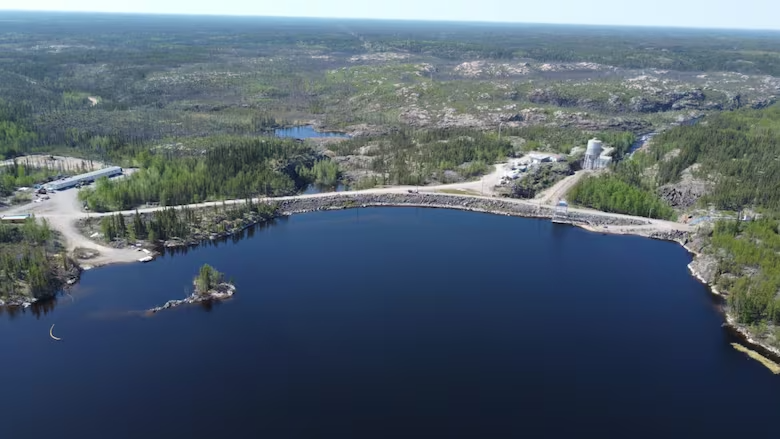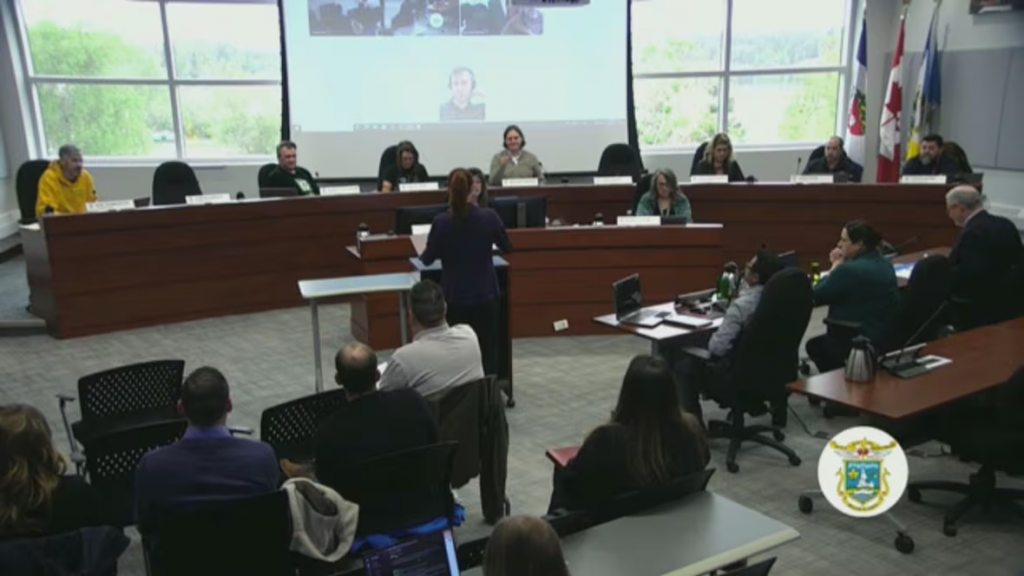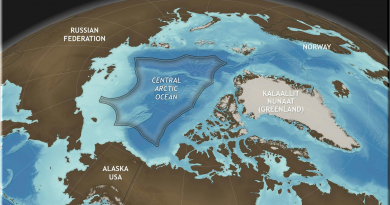N.W.T. officials provide update on major infrastructure projects, some rising costs

Taltson hydro expansion project now expected to cost more than $2B, minister says
The Northwest Territories government says construction on two of its biggest infrastructure projects could start by 2028, and that one of those projects is now expected to cost more than $2 billion.
Strategic Infrastructure Minister Caroline Wawzonek and her team updated Yellowknife city council Monday on three key projects, which are at different stages.
The Mackenzie Valley Highway, an all-season road from Wrigley to Tulita and Norman Wells, is one of the two major projects that could see construction begin by 2028, with a goal to finish in three to four years.
“Mackenzie Valley Highway, which is already being sort of built in stages … is likely to be ready for construction first,” Wawzonek said.
In recent years, Sahtu communities have faced supply issues due to low water levels disrupting barge service for essential goods. One government official told Yellowknife city council on Tuesday that those communities expressed “great urgency” to see the road, expected to cost hundreds of millions of dollars, built faster.
One of the other projects is the Slave Geological Province Corridor, an all-season road northeast of Yellowknife through a mineral-rich region to the Nunavut border. It would have the potential to link to the proposed Grays Bay Port and Road project. No construction start date has been set, but the government says it’s in talks with the Tlicho government and Yellowknives Dene First Nation to partner on the project.
Wawazonek said the third project — the Taltson hydro expansion — could move ahead concurrently with the two road-construction projects because it’s “a different kind of project.”
The Taltson expansion would link the South Slave’s hydro plant to Yellowknife’s Jackfish diesel plant, running a cable under Great Slave Lake from east of Fort Resolution, boosting renewable power capacity.
The project was initially estimated to cost one billion dollars but now, according to Wawzonek, the “rough estimation” has more than doubled the cost. It’s a jump she says isn’t unusual for projects of such a scale.
“I mean, we’re into the billions, somewhere between $2 billion and $3 billion,” Wawzonek said.

The minister said the cost estimates were reasonable.
“When I hear some of the numbers coming out of the nation-scale projects from our friends to the south and provinces, these three are not that outrageous. They’re a lot for us,” Wawzonek said.
She said territorial officials also met recently with the Canada Infrastructure Bank to explore funding options.
If things fall into place, the territory is aiming to start construction for the Taltson project in 2028, and have the first power by 2033. The government says it will create a 120 MW unified system that can support the territory for the future, both economically and from a cost-of-living perspective.
Bit of optimism
Yellowknife Coun. Steve Payne said that with the territory’s diamond mines all expected to close within the next few years, these infrastructure projects could create some optimism among residents.
“The last while we’ve people have been walking around with their head down, looking at or thinking about the end of diamond mines, and people are feeling pretty down,” Payne told the territorial officials at Monday’s meeting.
“But I’m actually getting a little bit of optimism from you guys when it comes to what’s on horizon up here for resource development … I believe we need some positive news up here, to get people back to where we once were.”
Wawzonek said there is optimism about the territory’s minimal resource sector, but it’s important to help unlock some of that potential with needed infrastructure.
“We can’t play, you know, we’re going to wait for them to build and then give them the infrastructure. We’ve tried that and it didn’t go very well,” Wawzonek said.
She says the territory also stands to benefit from a renewed focus on Arctic security, among federal officials in Ottawa.
“The extent that they’re talking about Grays Bay, you’re gonna need to connect that. And that’s where the [South Slave Geological Province] corridor comes in — which happens to benefit our minimal resource industry in that region,” Wawzonek said.
Related stories from around the North:
Canada: ‘Buy Canadian’ movement sees support in northern communities — even if it’s not always easy, CBC News
Norway: Investments in Jan Mayen to strengthen Norway’s strategic presence in North Atlantic, The Independent Barents Observer
United States: Companies announce investment in major Alaska oil project, The Associated Press



